The Zpacks Free Zip 2P is a two-person ultralight freestanding tent that weighs 31.6 oz and costs $899. It’s a single-wall tent with two mesh rainbow doors and two vestibules that can be rolled open and secured with magnets instead of toggles. The tent is easy to set up, provided there isn’t much wind (it turns into sail otherwise), and the interior is remarkably spacious compared to a trekking pole tent. A vaulted ceiling provides plenty of room to sit up in the middle, change your clothes inside, and stack gear at the ends.
- Capacity: 2 people
- Doors/vestibules: 2/2
- Weight: 31.6 oz / 896 g
- Exterior Dimensions:
- Interior Dimensions: 43″ x 44″ x 86″ (h x w x l)
- Exterior Dimensions: 43″ x 48″ x 92″ (h x ridgeline x l)
- Width including vestibules: 69″
- Vestibule Depth: 13″ each side
- Bathtub floor: 5″ deep
- Floor: 1.0 oz/sqyd Dyneema Composite Fabric
- Canopy: 0.55 oz/sqyd Standard Dyneema Composite Fabric
- Poles: Easton Carbon Fiber – max folded length 12″
- Hydrostatic head: 15,000 mm
- Pros: Ultralight, waterproof, does not stretch when wet
- Cons: Setup requires extra babysitting
Freestanding tents are very desirable because they can be set up on surfaces where it isn’t easy to insert tent stakes in the ground, like the beach, above-treeline on a rock ledge, on snow or ice, or on wooden tent platforms designed to protect the ground from overuse impacts. If there’s any wind, you still want to secure a freestanding tent, but they’re nice because you can pick them up and move them to a better location. This is possible because they maintain their shape and structure even when you pick them up. I say usually because the Zpacks Free Zip 2P does not, which is an interesting wrinkle in traditional freestanding tent design.
Tent Setup
The Zpacks Free Zip 2P is a dome-shaped tent that requires four collapsible carbon fiber tent poles to set up. The poles’ ends slot into tiny plastic rings in the corners of the base and near the center ridgeline, crisscrossing over each other for strength. The tent’s external skin is attached to the poles with plastic hooks and “hangs” underneath them. You still have to stake out the vestibule doors, but the tent’s skin is stretched tautly without the wrinkles that usually characterize Zpack’s trekking pole tent setups.
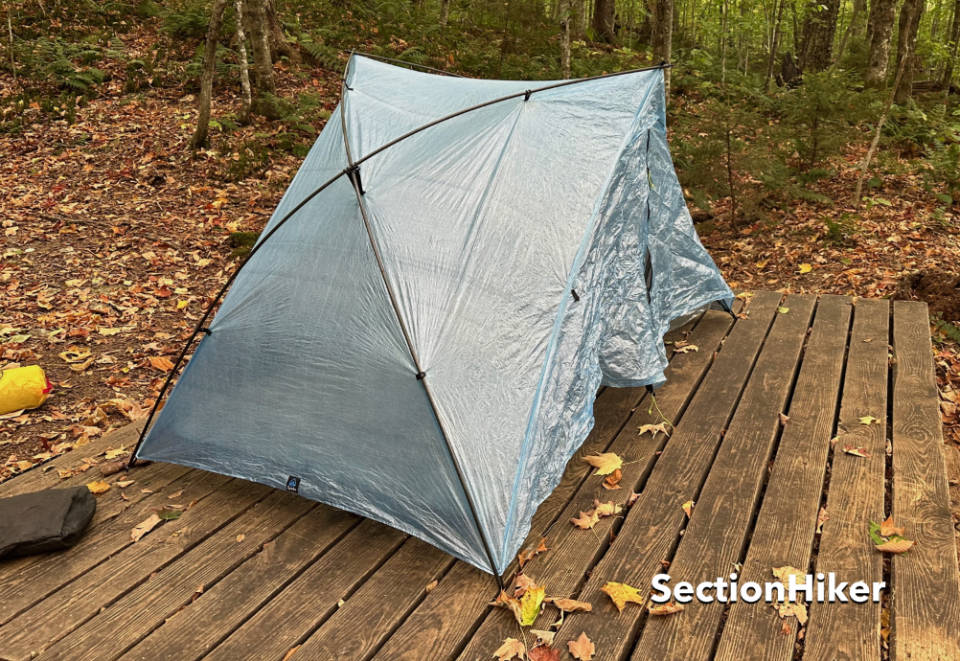
The vestibule doors have two panels joined by a waterproof zipper, so you can open one or both at a time. The floor is rectangular, not tapered, so it doesn’t matter which side of the tent points into the wind since you can open one or both of the doors in good weather. The vestibule is on the narrow side, but it’s wide enough to cover a pair of shoes or a backpack in most circumstances (more on this below). While the vestibule doors do have peak vents, there’s nothing to keep them propped open like a kickstand, so they may or may not provide any airflow if you have both doors closed.
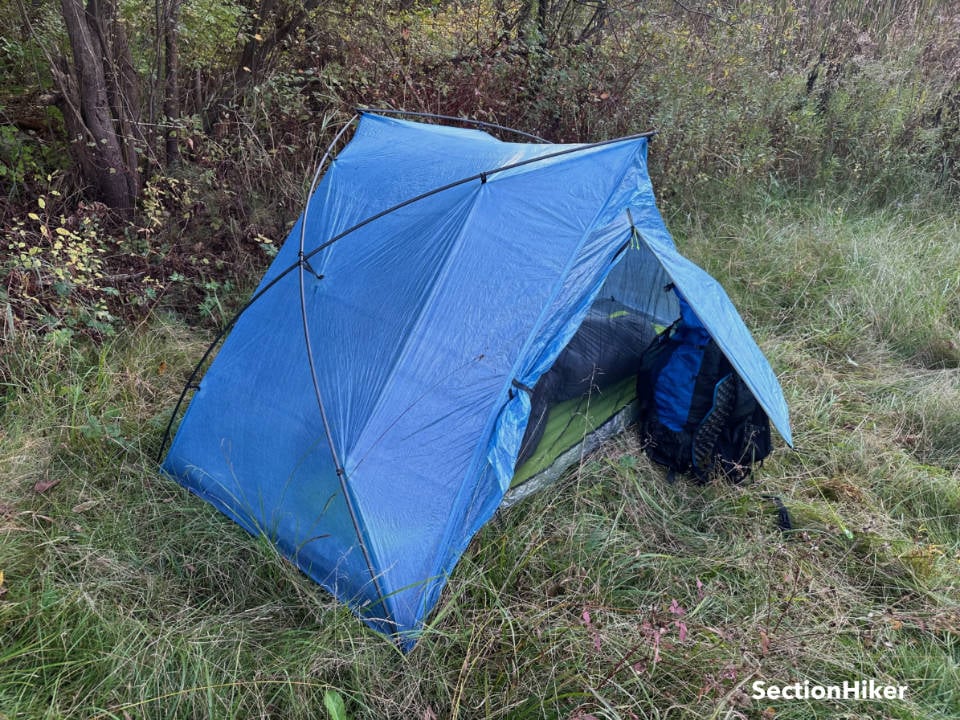
The tent’s interior is a dream come true if you’ve used Dyneema trekking pole tents before. The walls are stretched drum tight, and there’s plenty of room over your head and feet. There are two pockets inside the tent, positioned below the side doors in the middle, so I wouldn’t put anything delicate there. There are a few places in the interior where you can hang a pair of glasses out of harm’s way, though, below the ridgeline, at the ends on the floor tensioner, or on the mesh door zipper pulls.
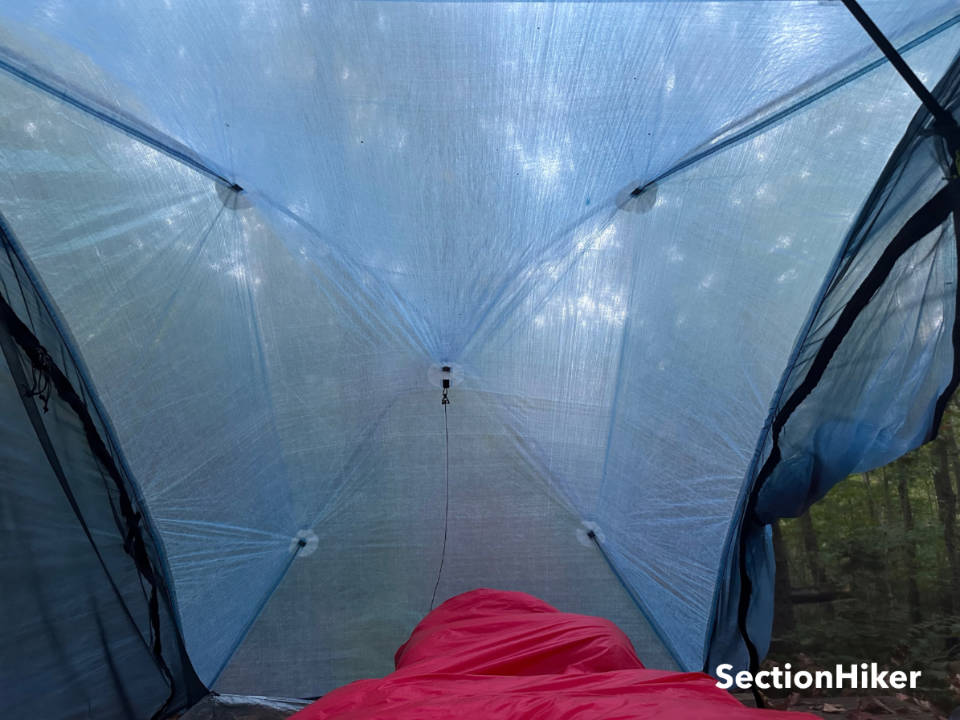
The tent has a bathtub floor that’s 5″ deep. It’s sewn to the walls with mesh so it “floats” and provides ventilation. There’s enough of an overhang between the canopy and the floor to ensure that rain doesn’t drain into the tent. You can also adjust the height of the bathtub floor at the tent end to prevent any rain that hits the ground from bouncing back into the tent, called splashback.
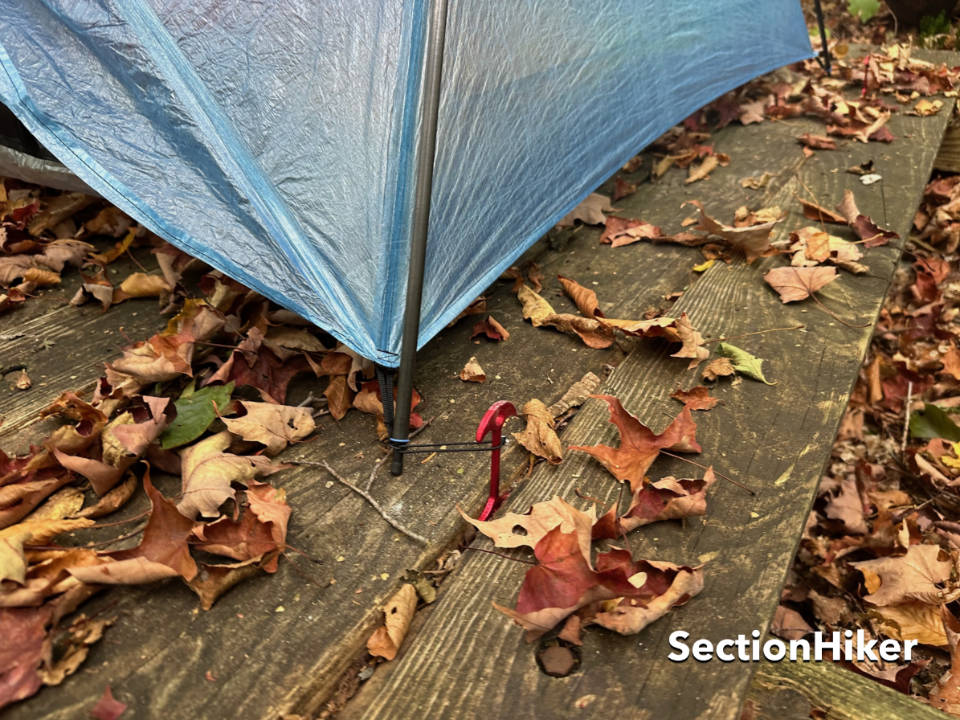
The tent is made with ultralight Dyneema Composite Fabric (DCF), so it is very lightweight and extremely waterproof. Its hydrostatic head of 15,000 is 5+ times higher than that of conventional tents made by REI, Big Agnes, MSR, or NEMO. The floor is made with a grade of DCF that’s twice the weight of the canopy and is reasonably durable, provided you take care to clear campsites of sharp stones and debris. A footprint is unnecessary unless you camp on highly abrasive rock or sand. However, if you puncture the floor, even if it’s a pinhole puncture, it’s easy to seal with tape.
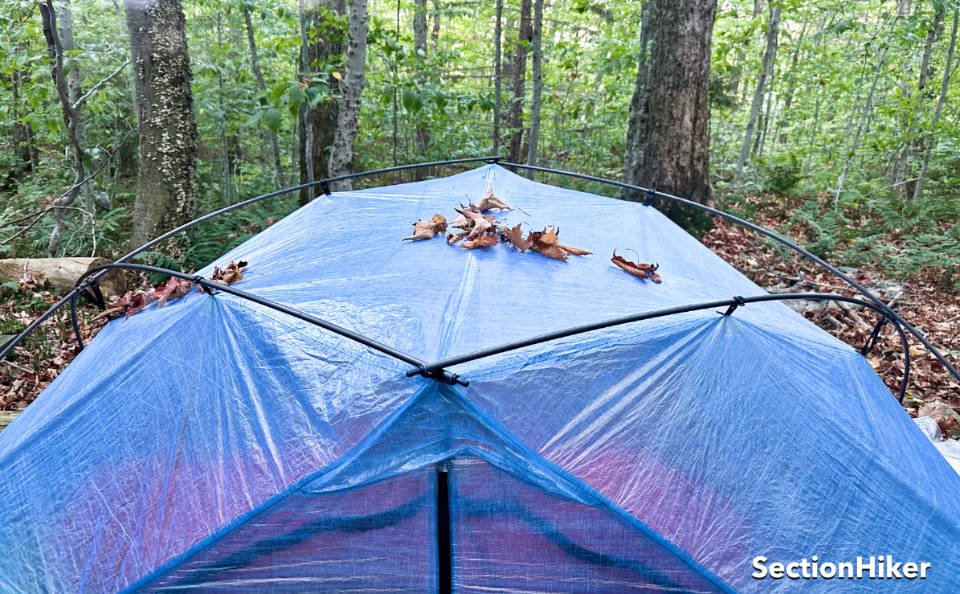
But there’s one thing you need to understand about the architecture of the Free Zip 2P and how it differs from most freestanding tents. For example, if you pick the tent, the sides will hinge closed along the ridgeline, like a clam. That’s because each pair of poles is only used to suspend one side of the canopy and doesn’t cross the ridgeline.
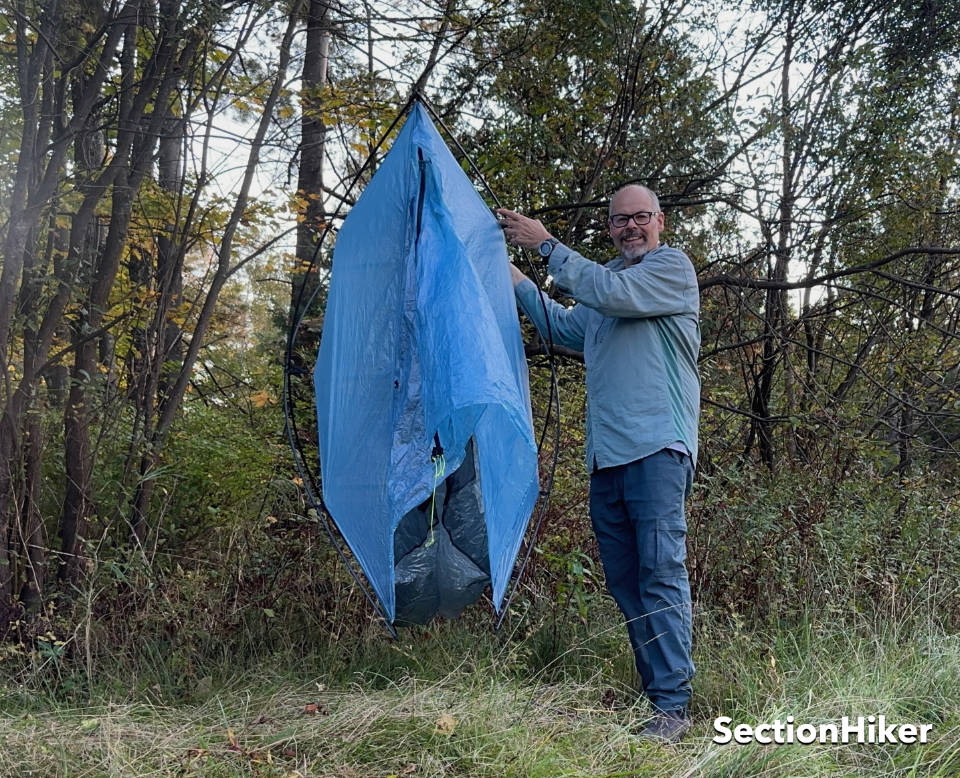
As a consequence, there’s some “play” in how far you can pull the ends of the tent apart when you set it up. If you pull the ends too far apart, you get a very flat roof where rain can pool, snow can pile, the depth of the bathtub floor gets shallower, and the vestibules curve inwards, eliminating their usefulness. Unfortunately, there’s no good indication, except possibly bathtub floor depth, of whether you’ve positioned the lengthwise ends at the correct distance from one another. It’s not the end of the world, but you need to take some extra care not to shoot yourself in the foot by flattening the bathtub floor and shrinking the depth of the vestibule doors. Here are two examples of doing that:
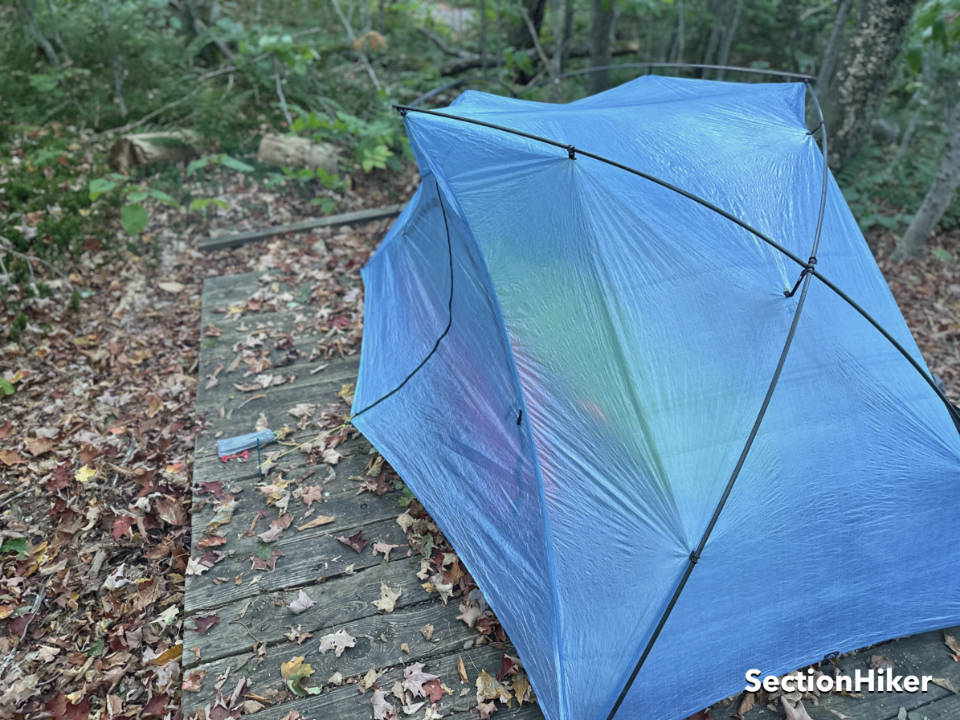
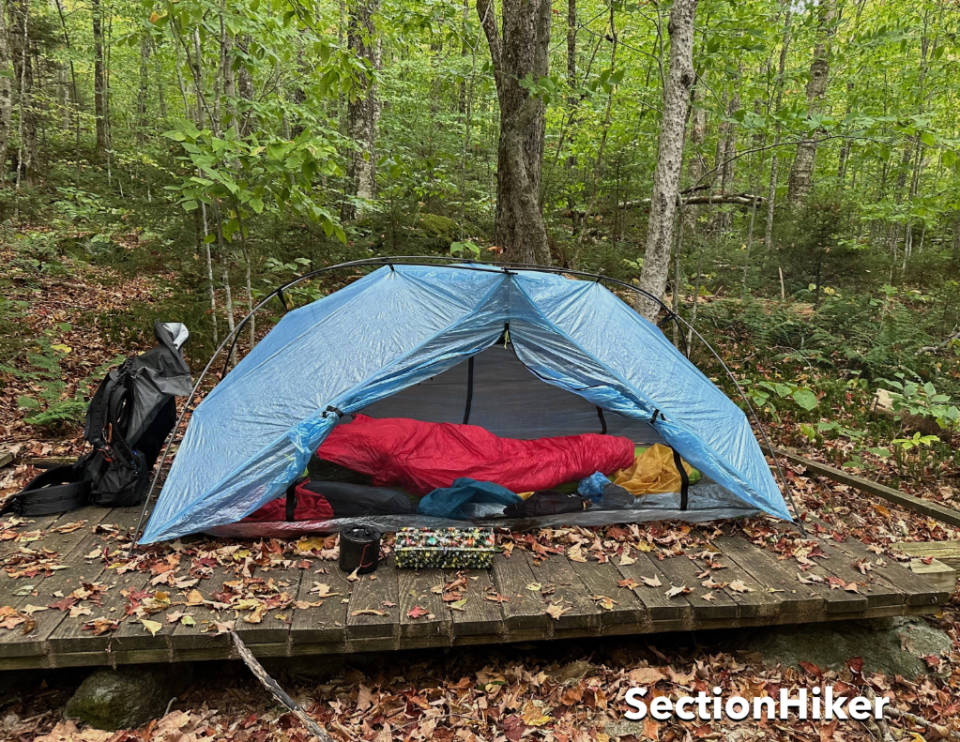
Despite being freestanding, there are also certain surfaces where you must stake out the Free Zip 2P, namely wooden platforms. The poles that hold up the canopy are under a fair amount of tension and will curve inwards, shortening the length of the tent unless restrained. If you pitch the tent on grass or dirt, there’s enough surface friction to prevent the ends from pulling toward one another. But if you pitch the tent on a smoother surface, like a wooden platform, the ends slide toward one another like a clam, unless they’re staked down. That’s easier said than done because the tent doesn’t ship with lineloc tensioners or long guylines on the corners. If you camp in the Northeast, where wooden platforms are prevalent, you’ll want to add some.
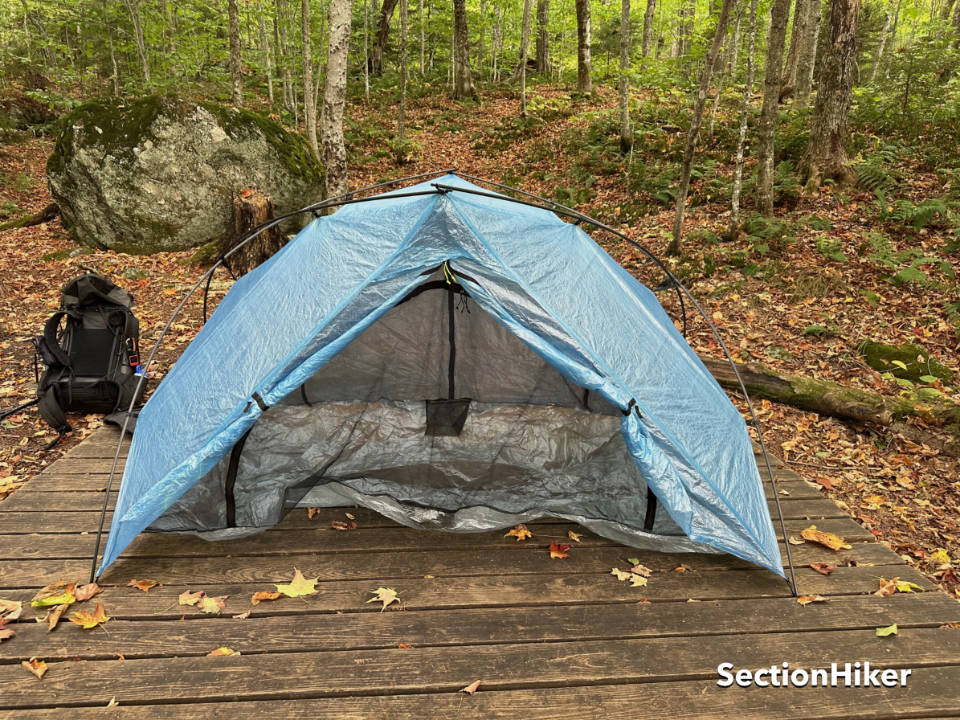
Recommendation
The Zpacks Free Zip 2P is a sub-2-pound ultralight tent that’s very comfortable, spacious, easy to pack, and extremely waterproof. While there are some funky consequences to its design, there aren’t any alternatives if your heart is set on getting a Dyneema tent that’s this lightweight and doesn’t require trekking poles to use. If you relax the weight constraint by as little as 10 ounces and Dyneema is not a must-have, there are alternative freestanding tents that are easier to use and less expensive. See our list of the 10 Best Freestanding Tents for specifics.
Disclosure: Zpacks donated a tent for review.
SectionHiker is reader-supported. We only make money if you purchase a product through our affiliate links. Help us continue to test and write unsponsored and independent gear reviews, beginner FAQs, and free hiking guides.
